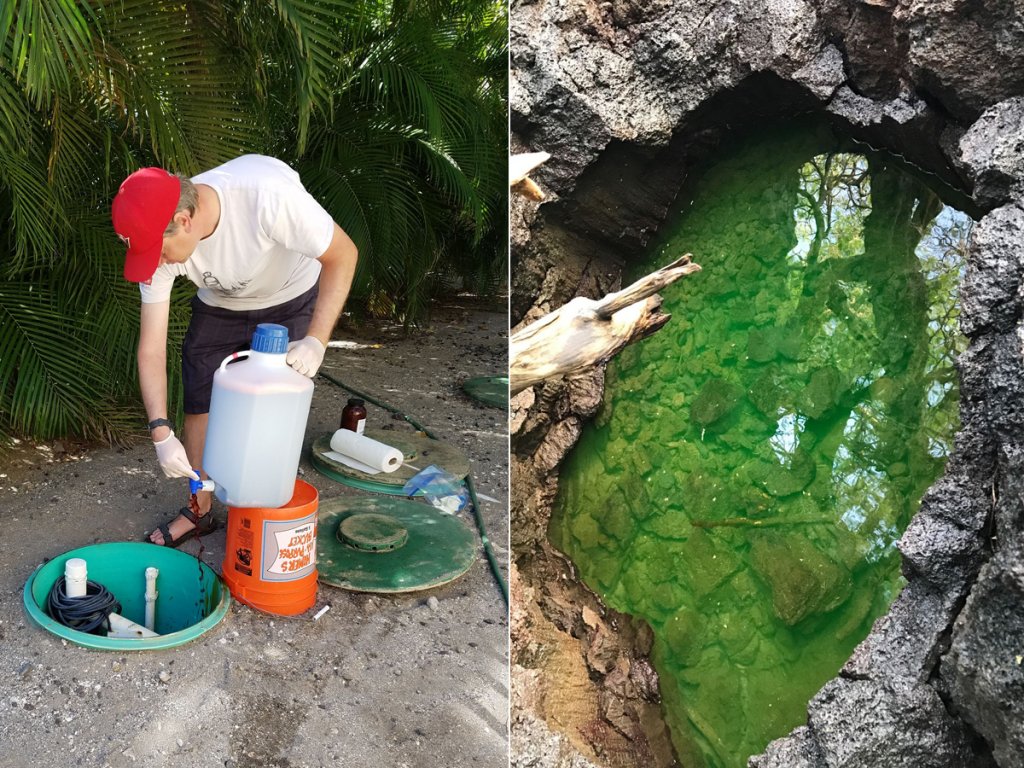Identifying hot spots of sewage pollution in Hilo, Hawaiʻi
PRINCIPAL INVESTIGATOR: Tracy Wiegner
Co-INVESTIGATORS: Steven Colbert, Craig Nelson
Graduate Fellows: Shayla Waiki, Joseph Nakoa

With the majority of the world’s population living within coastal areas, sewage pollution is a growing global problem. In rural areas, like much of Hawai‘i State, untreated sewage from cesspools is a human and environmental health threat because it contains elevated and potentially hazardous levels of pathogens and chemicals. Cesspools are used more widely in Hawai‘i than any other state, and they are problematic because many homes are close to the water on highly permeable substrate. This means that sewage quickly contaminates groundwater, posing an immediate human health risk. Because of this, and ecological concerns regarding coral reefs, Hawai‘i State banned installment of new cesspools in 2015. One location identified as a priority area for cesspool upgrades as part of the state’s mandate to replace all cesspools by 2050 is Hilo. However, there is very little water quality data are available for this area with over 8,700 cesspools. There is also one Hilo community that is not only impacted by cesspools, but also houses Hilo’s sewage treatment plant (STP) and its outfall – Keaukaha. It is a predominantly Native Hawaiian coastal community with a fringing coral reef. A tremendous amount of groundwater also discharges along this coast, and it is likely that untreated sewage quickly reaches the shoreline. Hence, this project’s goal is to identify sewage hotspots along Hilo’s coastline, and conduct more detailed measurements in Keaukaha to be able to distinguish contributions of sewage from the STP and cesspools. The project’s objectives are to: 1) determine the connectivity between cesspool and adjacent coastal waters through dye tracer studies, 2) evaluate the presence of sewage in nearshore waters through measurements of well-established and novel sewage indicators in areas with cesspools and a STP outfall, and 3) determine if state water quality standards are exceeded in these waters with regards to nutrients and fecal indicator bacteria. Data from this project will inform the Hilo community’s and Hawai‘i County’s decision regarding cesspool replacement. Also, new molecular tools developed as part of this project may be employed elsewhere to distinguish sewage pollution contributions from cesspools and STPs. This type of information will allow for educated decisions regarding wastewater and coral reef management to be made.

